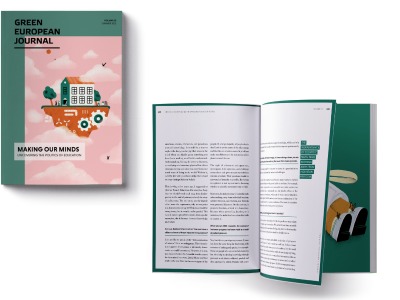Education is a key to a just society, providing opportunities to learn, discover, and change. Public education makes sure that the paths it can open are accessible to all. With support from the European Data Journalism Network, we set out to examine the state of public education in Europe, looking at the levels of investment in education, participation rates, as well as its impact on equality and relation to the not unambivalent notion of social mobility.
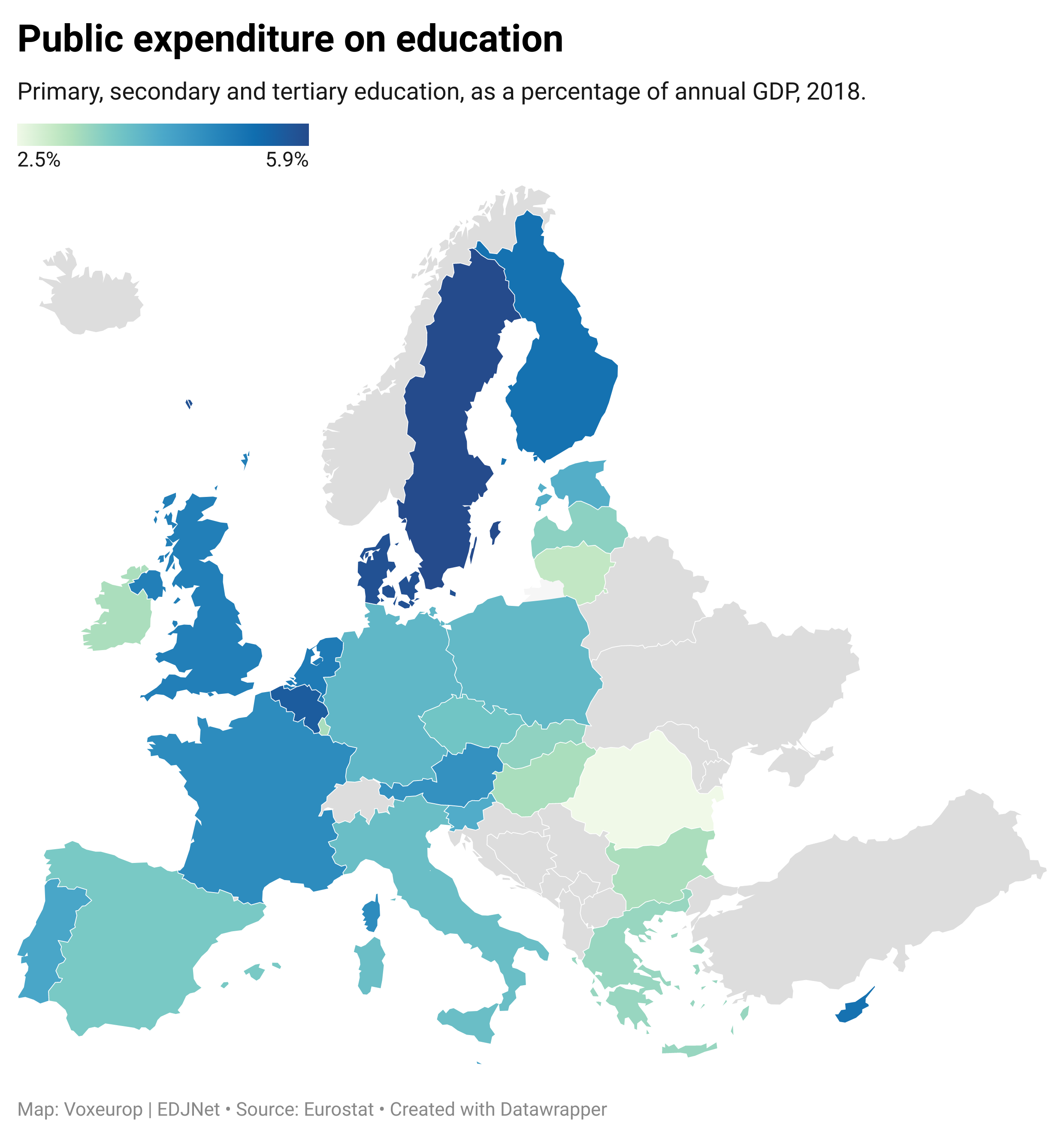
Looking at the map of Europe [above], the countries that invest most heavily in education are, with Cyprus as the exception, all in northern Europe. Sweden commits the highest share of its GDP to education, 5.91 per cent, followed by Denmark, Belgium, Finland, the Netherlands, and the United Kingdom. Drilling down further, tertiary education generally receives the largest amount of funding followed by primary education. The emphasis on primary education shows how governments recognise the particular importance of early school.
There is an almost perfect correspondence between investment in education and attainment [below]. Czechia and Italy are the two countries with the lowest number of graduates and they each respectively invest 3.67 per cent and 3.78 per cent of their GDP.
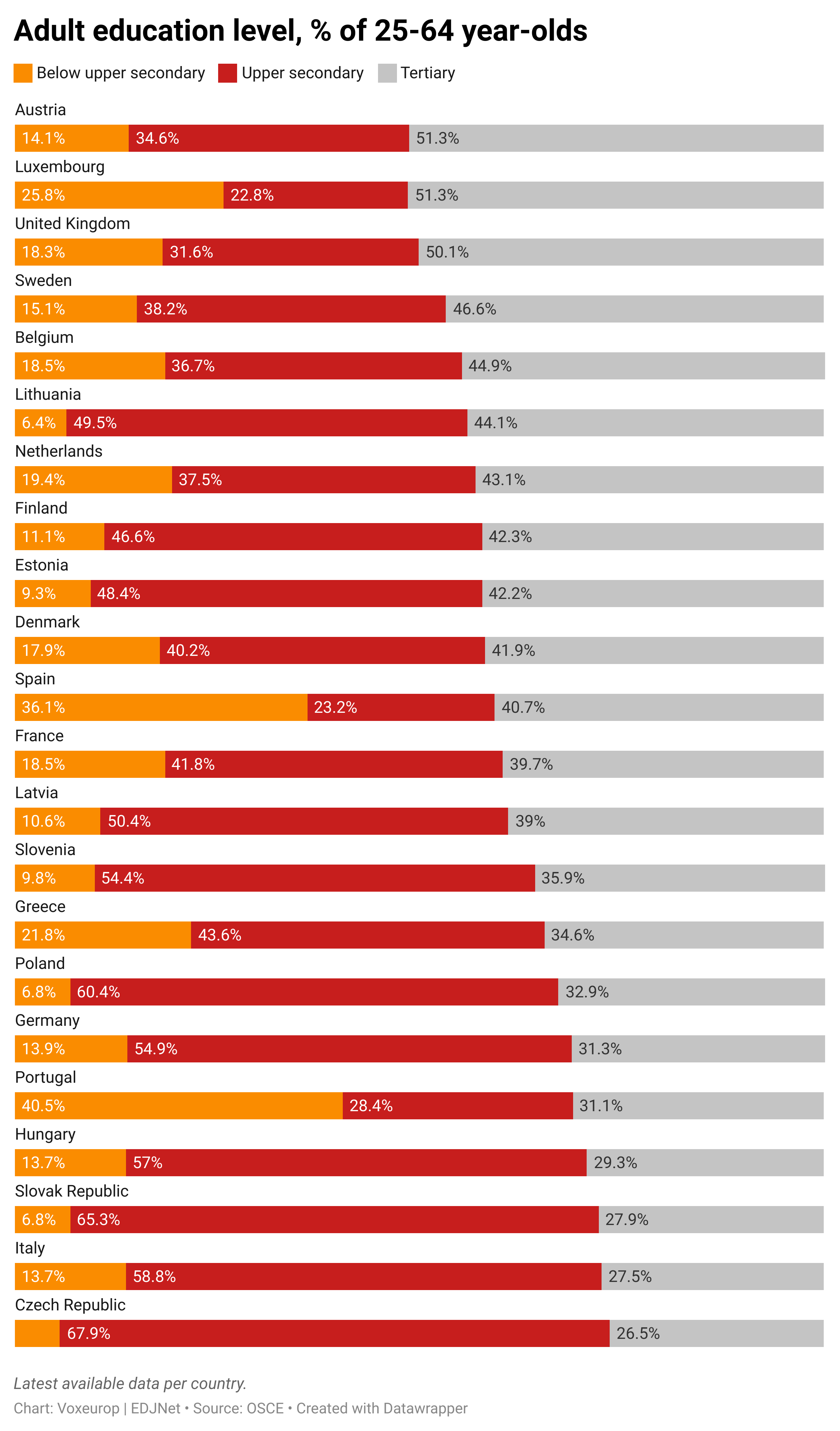
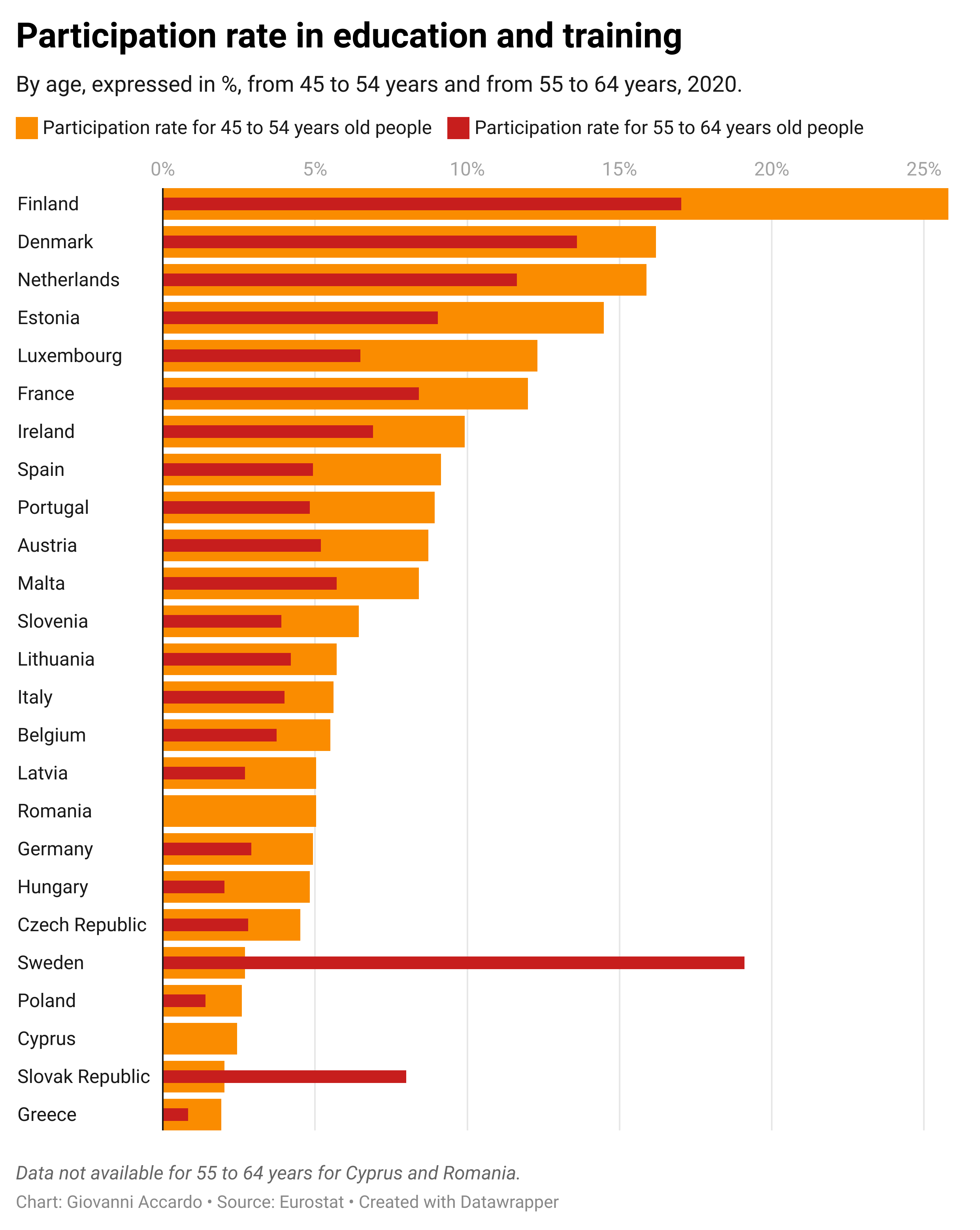
Education should not finish when you leave or university; lifelong learning allows people of any age to pursue interests, change careers, and develop their passions. Of course, participation in lifelong learning [above] depends on public funding, social policy, and societal norms. Here again, we find states such as Finland and Denmark leading the pack, their investment opening up access to education for people of all ages.
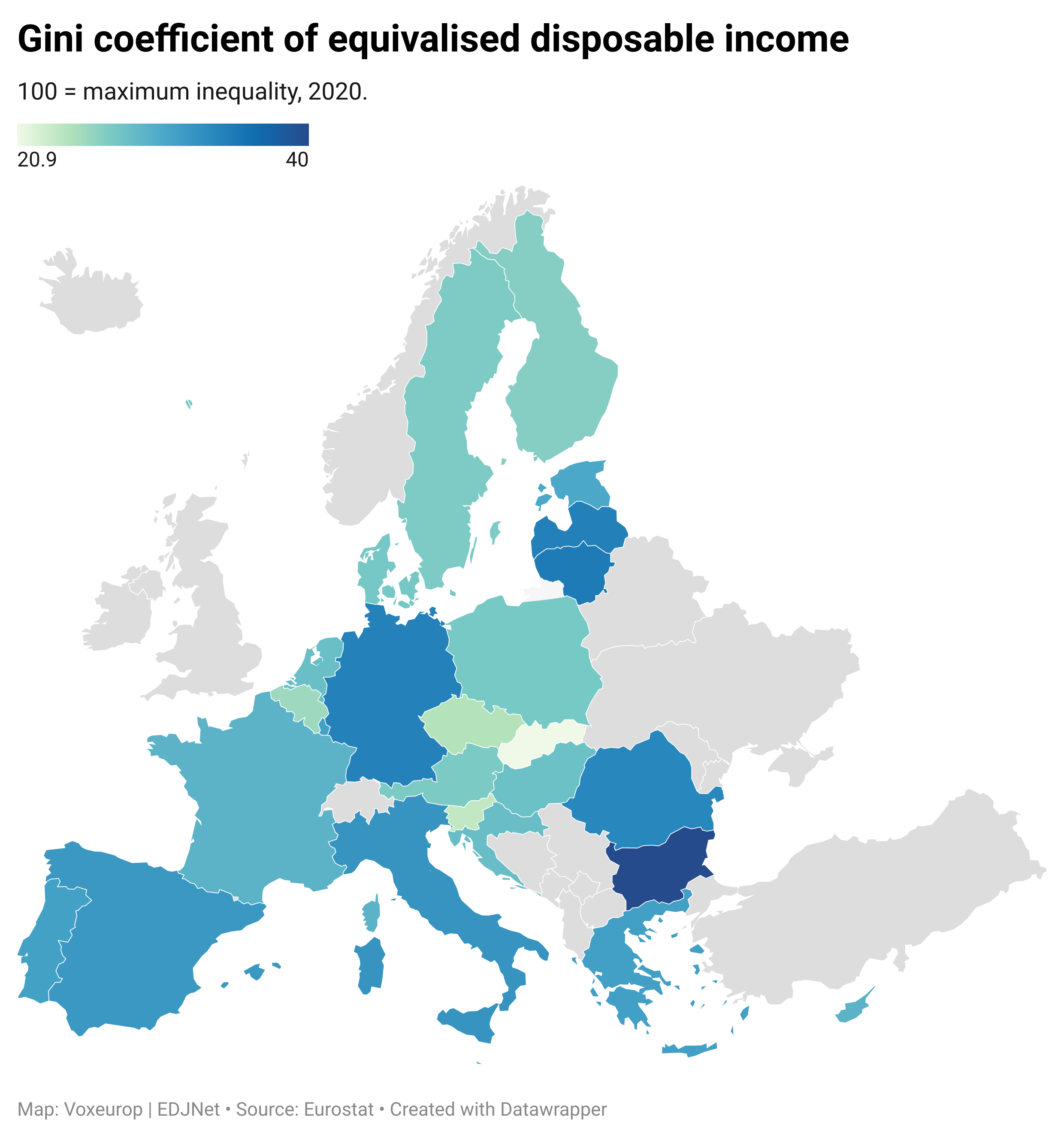
How then is investment in education reflected in equality across society? Gini coefficients measure inequality and can range from 0 to 100, where 0 represents perfect equality and 100 maximum inequality. The data provided by Eurostat looks at disposable household income [above]. With a few exceptions, the indication is that countries that invest more in education tend to be more equal. As public education is just one part of a redistributive welfare state, to say that it is an equalising force in and of itself would be an overstatement. But education, equality, and prosperity clearly go hand in hand.
Since the 2008 financial crisis, the fate of young graduates has been at the centre of the debate in many countries. The countries that were hit hardest by that crisis were often those that underinvest in education such as Italy and Spain. Young people living in countries, over- whelmingly in northern Europe, that spend more on education experienced smaller falls in incomes and opportunity.
Drawing a conclusion from these findings, a rough but clear line divides north-western Europe from southern and eastern Europe when it comes to investment in education and educational attainment. When it comes to a society’s prosperity, education is found to be not only a source of higher earnings and driver of social mobility but also a factor in a country’s resilience to recession and stagnation. Investing in education, after all, is investing in the future.
Data and contributing analysis provided by Daniele Ruzza, an Italian freelance journalist and translator.

